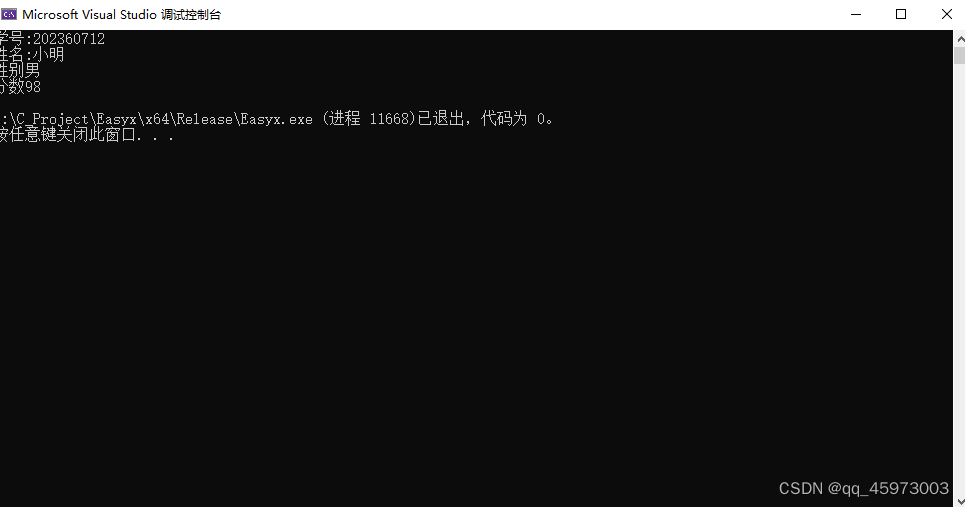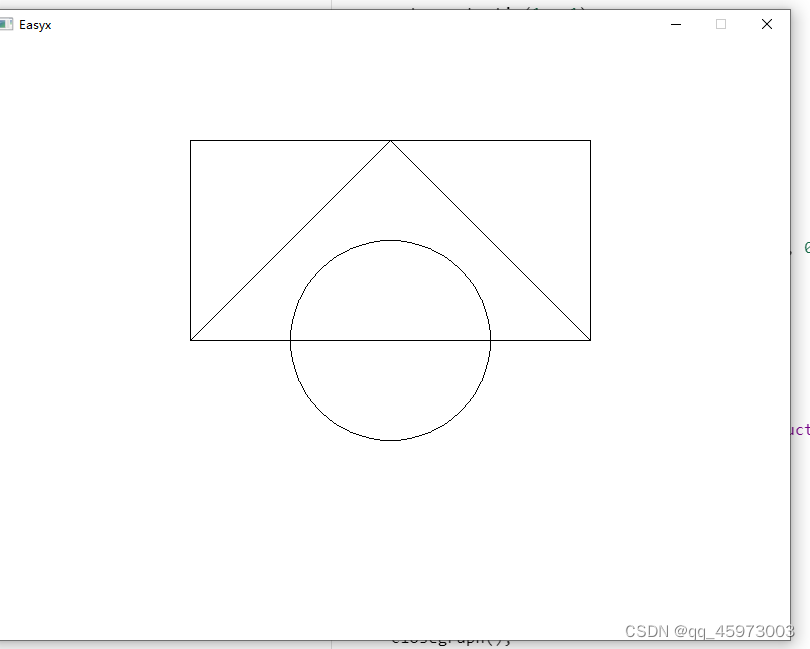-
c面向对象编码风格(上)
面向对象和面向过程的基本概念
面向对象和面向过程是两种不同的编程范式,它们在软件开发中用于组织和设计代码的方式。
面向过程编程(Procedural Programming)是一种以过程(函数、方法)为核心的编程方式。在面向过程编程中,程序被划分为一系列的过程或函数,这些过程按照顺序逐步执行,每个过程都可以接受输入参数并返回输出结果。数据在过程中被操作,通过参数进行传递。面向过程编程关注的是解决问题的步骤和算法,通过将问题拆分为一系列的步骤来解决。
面向对象编程(Object-Oriented Programming,OOP)是一种以对象为核心的编程方式。在面向对象编程中,程序被组织成一系列的对象,每个对象都有自己的属性(数据)和行为(方法)。对象之间通过消息传递来进行通信和交互,对象可以通过继承、封装和多态等特性进行关联和扩展。面向对象编程关注的是将现实世界中的事物抽象成对象,通过对象之间的交互来解决问题。
面向过程和面向对象的主要区别如下:
- 抽象程度:面向过程编程更加关注解决问题的具体步骤和算法,将问题分解为一系列的过程。而面向对象编程更加关注问题的抽象,将问题抽象成对象及其相互关系。
- 数据和行为:在面向过程编程中,数据和行为是分离的,函数对数据进行操作。而在面向对象编程中,数据和行为紧密结合,对象包含了数据和对数据进行操作的方法。
- 封装和隐藏:面向对象编程通过封装将数据和相关方法组合在一起,隐藏了内部实现细节,提供了更好的模块化和抽象性。而面向过程编程没有明确的封装机制,数据和方法之间的关联性较弱。
- 继承和多态:面向对象编程通过继承和多态实现代码的重用和扩展,可以创建基于现有类的新类,并对方法进行覆盖或重写。而面向过程编程没有明确的继承和多态特性。
当我们具体分析面向过程和面向对象编程时,可以从以下几个方面进行比较:
- 效率:面向过程编程的执行效率通常比面向对象编程高,因为它直接按照步骤执行,没有额外的对象和方法调用开销。而面向对象编程需要创建对象和调用方法,会增加执行的开销。
- 可维护性:面向对象编程相较于面向过程编程具有更好的可维护性。面向对象编程利用封装、继承和多态等特性,能够更好地组织和管理代码,降低了代码的耦合性。这样在修改和扩展代码时更容易定位和处理,也减少了对现有代码的影响。
- 可复用性:面向对象编程具有更好的可复用性。通过继承和多态等特性,可以基于现有类创建新的类并重用已有的方法和属性。这样可以减少重复编写代码的工作量,提高代码的复用性和可维护性。
- 抽象性和扩展性:面向对象编程更加注重对问题的抽象和建模,能够更好地反映现实世界中事物之间的关系。通过类、对象和继承等特性,可以更容易地扩展和修改系统的功能。而面向过程编程则更加关注具体的算法和步骤,对于问题的抽象和扩展性较弱。
一下的代码是使用面向过程的思维进行编写的
#include#include #include /* 面向过程和面向对象 question1: 面向过程 1: 将问题的解法分解成若干步骤 2: 使用函数分别实现这些步骤 3: 依次调用这些函数 question2: 面向对象 1: 面向对象的编程逻辑使用c语言实现面向对象的过程 面向对象编程风格的三大特性 1: 封装 2: 继承 3: 多态 */ // 创建学生类型的结构体 struct student { int id; char name[20]; int gender; int mark; }; // 学生的学号 int makeStudentId(int year, int classNum, int serialNum) { char buffer[20]; // sprintf的作用是字符拼接,将结构传入第一个参数buffer指示的字符当中 sprintf(buffer, "%d%d%d", year, classNum, serialNum); // 函数atoi将指示的字符串转换为整型并返回结果 int id = atoi(buffer); return id; } // 定义性别的结构体0表示为女生, 1 表示为男生,定义两个函数对性别进行处理将整型表示的性别转换为字符串表示的性别 const char* numGenderToStrGender(int numGender) { if (numGender == 0) { return "女"; } else if (numGender == 1) { return "男"; } return "佚名"; } // 将字符串表示的性别转换为整型表示的性别进行处理 int strGenderToNumGender(const char* strGender) { int numGender; if (strcmp("男", strGender) == 0) { numGender = 1; } else if (strcmp("女", strGender) == 0) { numGender = 0; } else { numGender = -1; } return numGender; } int main(){ // 结构体的声明 struct student stu; // 给id赋值 stu.id = makeStudentId(2022, 607, 12); // 给name赋值 strcpy(stu.name, "小明"); // 给gender赋值 stu.gender = strGenderToNumGender("男"); // 直接给mark赋值 stu.mark = 98; // 使用printf打印输出相关数据,采用点的方式对函数进行调用 printf("学号:%d\n", stu.id); printf("姓名:%d\n", stu.name); // 将数字1和0转换为字符串男和女 const char* gender = numGenderToStrGender(stu.gender); printf("性别%d\n", gender); printf("分数%d\n", stu.mark); return 0; } - 1
- 2
- 3
- 4
- 5
- 6
- 7
- 8
- 9
- 10
- 11
- 12
- 13
- 14
- 15
- 16
- 17
- 18
- 19
- 20
- 21
- 22
- 23
- 24
- 25
- 26
- 27
- 28
- 29
- 30
- 31
- 32
- 33
- 34
- 35
- 36
- 37
- 38
- 39
- 40
- 41
- 42
- 43
- 44
- 45
- 46
- 47
- 48
- 49
- 50
- 51
- 52
- 53
- 54
- 55
- 56
- 57
- 58
- 59
- 60
- 61
- 62
- 63
- 64
- 65
- 66
- 67
- 68
- 69
- 70
- 71
- 72
- 73
- 74
- 75
- 76
面向对象代码的编写方式
#define _CRT_SECURE_NO_WARNINGS #include#include #include #include #include // 编写函数指针 struct student { void (*setStudentId)(struct student* s, int year, int classNum, int serialNum); const char* (*getGender)(struct student* s); void (*setGender)(struct student* s, const char* strGender); int id; char name[20]; int gender; int mark; }; // 学生的学号 void setStudentId(struct student *s,int year, int classNum, int serialNum) { char buffer[20]; // sprintf的作用是字符拼接,将结构传入第一个参数buffer指示的字符当中 sprintf(buffer, "%d%d%d", year, classNum, serialNum); // 函数atoi将指示的字符串转换为整型并返回结果 int id = atoi(buffer); // 使用面向对象的方式直接给结构体中的成员id赋值 s->id = id; } const char* getGender(struct student *s) { if (s->gender == 0) { return "女"; } else if (s -> gender == 1) { return "男"; } return "佚名"; } // 将字符串表示的性别转换为整型表示的性别进行处理 void setGender(struct student* s, const char* strGender) { int numGender; if (strcmp("男", strGender) == 0) { numGender = 1; } else if (strcmp("女", strGender) == 0) { numGender = 0; } else { numGender = -1; } s ->gender = numGender; } // 初始化方法 void initStudent(struct student* s) { s->setStudentId = setStudentId; s->getGender = getGender; s->setGender = setGender; } int main(){ // 结构体的声明 struct student stu; // 函数体在使用过程中需要调用initStudent函数设置正确的指向 initStudent(&stu); // 直接调用函数传入结构体指针 setStudentId(&stu, 2023, 607, 12); strcpy(stu.name, "小明"); setGender(&stu, "男"); stu.mark = 98; // 使用printf打印输出相关数据,采用点的方式对函数进行调用 printf("学号:%d\n", stu.id); printf("姓名:%s\n", stu.name); // 将数字1和0转换为字符串男和女 const char* gender = stu.getGender(&stu); printf("性别%s\n", gender); printf("分数%d\n", stu.mark); return 0; } - 1
- 2
- 3
- 4
- 5
- 6
- 7
- 8
- 9
- 10
- 11
- 12
- 13
- 14
- 15
- 16
- 17
- 18
- 19
- 20
- 21
- 22
- 23
- 24
- 25
- 26
- 27
- 28
- 29
- 30
- 31
- 32
- 33
- 34
- 35
- 36
- 37
- 38
- 39
- 40
- 41
- 42
- 43
- 44
- 45
- 46
- 47
- 48
- 49
- 50
- 51
- 52
- 53
- 54
- 55
- 56
- 57
- 58
- 59
- 60
- 61
- 62
- 63
- 64
- 65
- 66
- 67
- 68
- 69
- 70
- 71
- 72
- 73
- 74
- 75
- 76
- 77
- 78
- 79
- 80
- 81
- 82
- 83
- 84
- 85
 面向对象继承方面的代码
面向对象继承方面的代码#define _CRT_SECURE_NO_WARNINGS #include#include #include #include #include // 编写函数指针 // 继承 struct person { int id; char name[20]; int gender; const char* (*getGender)(struct person* s); void (*setGender)(struct person* s, const char* strGender); }; struct teacher { struct person super; char subject[20]; }; struct student { struct person super; int mark; void (*setStudentId)(struct student* s, int year, int classNum, int serialNum); }; // 学生的学号 void setStudentId(struct student *s,int year, int classNum, int serialNum) { char buffer[20]; // sprintf的作用是字符拼接,将结构传入第一个参数buffer指示的字符当中 sprintf(buffer, "%d%d%d", year, classNum, serialNum); // 函数atoi将指示的字符串转换为整型并返回结果 int id = atoi(buffer); // 使用面向对象的方式直接给结构体中的成员id赋值 s->super.id = id; } const char* getGender(struct person *s) { if (s->gender == 0) { return "女"; } else if (s -> gender == 1) { return "男"; } return "佚名"; } // 将字符串表示的性别转换为整型表示的性别进行处理 void setGender(struct person* s, const char* strGender) { int numGender; if (strcmp("男", strGender) == 0) { numGender = 1; } else if (strcmp("女", strGender) == 0) { numGender = 0; } else { numGender = -1; } s ->gender = numGender; } // 初始化函数指针 void initPerson(struct person* p) { p->getGender = getGender; p->setGender = setGender; } // 初始化函数 void initStudent(struct student* s) { initPerson(&(s->super)); s->setStudentId = setStudentId; } // 初始化函数 void initTeacher(struct teacher* t) { initPerson(&(t->super)); } int main(){ // 结构体的声明 struct student stu; // 函数体在使用过程中需要调用initStudent函数设置正确的指向 initStudent(&stu); // 直接调用函数传入结构体指针 setStudentId(&stu, 2023, 607, 12); strcpy(stu.super.name, "小明"); stu.super.setGender(&stu.super, "男"); stu.mark = 98; // 使用printf打印输出相关数据,采用点的方式对函数进行调用 printf("学号:%d\n", stu.super.id); printf("姓名:%s\n", stu.super.name); // 将数字1和0转换为字符串男和女 const char* gender = stu.super.getGender(&stu.super); printf("性别%s\n", gender); printf("分数%d\n", stu.mark); putchar('\n'); struct teacher t; // 初始化teacher initTeacher(&t); t.super.id = 12345; strcpy(t.super.name, "林老师"); t.super.setGender(&t.super, "男"); strcpy(t.subject, "C语言"); // 打印这些数值 printf("学号:%d\n", t.super.id); printf("姓名:%s\n", t.super.name); gender = t.super.getGender(&t.super); printf("性别:%s\n", gender); printf("科目:%s\n", t.subject); return 0; } - 1
- 2
- 3
- 4
- 5
- 6
- 7
- 8
- 9
- 10
- 11
- 12
- 13
- 14
- 15
- 16
- 17
- 18
- 19
- 20
- 21
- 22
- 23
- 24
- 25
- 26
- 27
- 28
- 29
- 30
- 31
- 32
- 33
- 34
- 35
- 36
- 37
- 38
- 39
- 40
- 41
- 42
- 43
- 44
- 45
- 46
- 47
- 48
- 49
- 50
- 51
- 52
- 53
- 54
- 55
- 56
- 57
- 58
- 59
- 60
- 61
- 62
- 63
- 64
- 65
- 66
- 67
- 68
- 69
- 70
- 71
- 72
- 73
- 74
- 75
- 76
- 77
- 78
- 79
- 80
- 81
- 82
- 83
- 84
- 85
- 86
- 87
- 88
- 89
- 90
- 91
- 92
- 93
- 94
- 95
- 96
- 97
- 98
- 99
- 100
- 101
- 102
- 103
- 104
- 105
- 106
- 107
- 108
- 109
- 110
- 111
- 112
- 113
- 114
- 115
- 116
- 117
- 118
- 119
- 120
- 121
- 122

面向对象之多态#include#include struct Shape { void (*draw)(struct Shape*); }; struct Rect { struct Shape super; int left; int top; int right; int bottom; }; struct Circle { struct Shape super; int x; int y; int r; }; struct Triangle { struct Shape super; POINT p1; POINT p2; POINT p3; }; void drawRect(struct Rect* r) { rectangle(r->left, r->top, r->right, r->bottom); } void drawCircle(struct Circle* c) { circle(c->x, c->y, c->r); } void drawTriangle(struct Triangle* t) { line(t->p1.x, t->p1.y, t->p2.x, t->p2.y); line(t->p2.x, t->p2.y, t->p3.x, t->p3.y); line(t->p3.x, t->p3.y, t->p1.x, t->p1.y); } void initRect(struct Rect* r) { r->super.draw = (void (*)(struct Shape*))drawRect; } void initCircle(struct Circle* c) { c->super.draw = (void (*)(struct Shape*))drawCircle; } void initTriangle(struct Triangle* t) { t->super.draw = (void (*)(struct Shape*))drawTriangle; } int main() { initgraph(800, 600); setaspectratio(1, -1); setorigin(400, 300); setbkcolor(WHITE); setlinecolor(BLACK); cleardevice(); struct Rect r = { {}, -200, 200, 200, 0 }; struct Circle c = { {}, 0, 0, 100 }; struct Triangle t = { {}, {0, 200}, {-200, 0}, {200, 0} }; initRect(&r); initCircle(&c); initTriangle(&t); struct Shape* arrShape[3] = { (struct Shape*)&r, (struct Shape*)&c, (struct Shape*)&t }; for (int i = 0; i < 3; i++) { arrShape[i]->draw(arrShape[i]); } getchar(); closegraph(); return 0; } - 1
- 2
- 3
- 4
- 5
- 6
- 7
- 8
- 9
- 10
- 11
- 12
- 13
- 14
- 15
- 16
- 17
- 18
- 19
- 20
- 21
- 22
- 23
- 24
- 25
- 26
- 27
- 28
- 29
- 30
- 31
- 32
- 33
- 34
- 35
- 36
- 37
- 38
- 39
- 40
- 41
- 42
- 43
- 44
- 45
- 46
- 47
- 48
- 49
- 50
- 51
- 52
- 53
- 54
- 55
- 56
- 57
- 58
- 59
- 60
- 61
- 62
- 63
- 64
- 65
- 66
- 67
- 68
- 69
- 70
- 71
- 72
- 73
- 74
- 75
- 76
- 77
- 78
- 79
- 80
- 81
- 82
- 83
- 84
- 85
- 86
- 87
- 88
- 89
- 90
- 91
- 92
- 93
- 94
- 95

-
相关阅读:
Tomcat深入浅出——Servlet(二)
Java架构师内功计算机网络
Android kotlin自定义圆形菜单的功能实现
分类预测 | Matlab实现基于PSO-SDAE粒子群优化算法优化堆叠去噪自编码器的数据分类预测
浅析linux异步io框架 io_uring
GienTech动态|入选软件和信息技术服务竞争力百强;参展世界计算大会、网络安全博览会
【HUAWEI】VLAN+OSPF+单臂路由
牛客小白月赛65
Linux 中设置静态IP的方法步骤
从零开始C语言精讲篇7:数据的存储
- 原文地址:https://blog.csdn.net/qq_45973003/article/details/134231694
